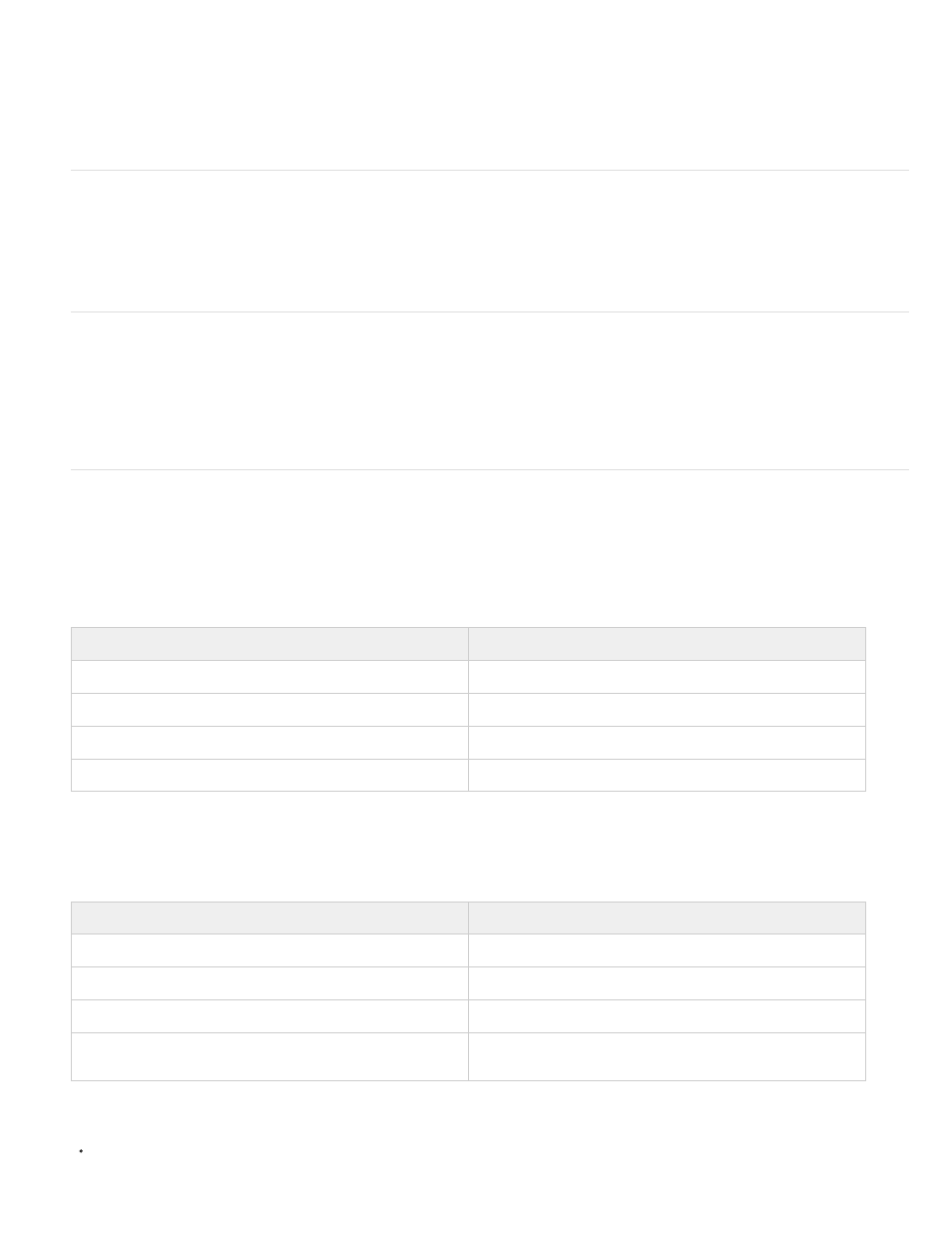Setting up an asp development environment, Creating a root folder for the application – Adobe Dreamweaver CC 2014 v.13 User Manual
Page 646

Note: The Developer Edition is for non-commercial use for developing and testing web applications. It is not licensed for deployment. It supports
requests from the local host and two remote IP addresses. You can use it to develop and test your web applications as long as you want; the
software does not expire. For more information, see ColdFusion help (Help > ColdFusion Help).
During installation, you can configure ColdFusion to use the web server built into ColdFusion or another web server installed on your system.
Generally, it’s best to match your development environment to your production environment. Therefore, if you have an existing web server such as
Microsoft IIS on your development computer, you may want to use it instead of the built-in ColdFusion web server.
Setting up a PHP development environment
For detailed instructions on setting up a PHP development environment for Dreamweaver on your Windows or Mac computer, see the Adobe
website at
.
Editions of the PHP application server exist for Windows, Linux, UNIX, HP-UX, Solaris, and Mac OS X systems. For more information on the
application server, see the PHP documentation, which you can also download from the PHP website at
Setting up an ASP development environment
For detailed instructions on setting up an ASP development environment for Dreamweaver on your Windows or Mac computer, see the Adobe
website at
.
To run ASP pages, you need an application server that supports Microsoft Active Server Pages 2.0., such as Microsoft IIS (Internet Information
Services), which comes with Windows 2000 and Windows XP Professional. Windows XP Professional users can install and run IIS on their local
computer. Macintosh users can use a web hosting service with an ASP plan or install IIS on a remote computer.
Creating a root folder for the application
After signing up with a web hosting company or setting up the server software yourself, create a root folder for your web application on the
computer running the web server. The root folder can be local or remote, depending on where your web server is running.
The web server can serve any file in this folder or in any of its subfolders in response to an HTTP request from a web browser. For example, on a
computer running ColdFusion 8, any file in the \ColdFusion8\wwwroot folder or any of its subfolders can be served to a web browser.
The following are the default root folders of selected web servers:
Web server
Default root folder
ColdFusion 8
\ColdFusion8\wwwroot
IIS
\Inetpub\wwwroot
Apache (Windows)
\apache\htdocs
Apache (Macintosh)
Users:MyUserName:Sites
To test the web server, place a test HTML page in the default root folder and attempt to open it by entering the page’s URL in a browser. The URL
comprises the domain name and the filename of the HTML page, as follows: www.example.com/testpage.htm.
If the web server is running on your local computer, you can use localhost instead of a domain name. Enter one of the following localhost URLs to
match your web server:
Web server
Localhost URL
ColdFusion 8
http://localhost:8500/testpage.htm
IIS
http://localhost/testpage.htm
Apache (Windows)
http://localhost:80/testpage.htm
Apache (Macintosh)
http://localhost/~MyUserName/testpage.htm (where MyUserName
is your Macintosh user name)
Note: By default the ColdFusion web server runs on port 8500 and the Apache web server for Windows runs on port 80.
If the page doesn’t open as expected, check for the following errors:
The web server is not started. Consult the web server’s documentation for starting instructions.
639
